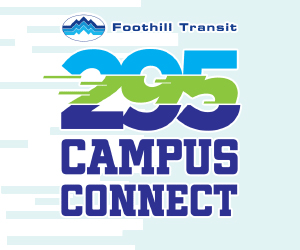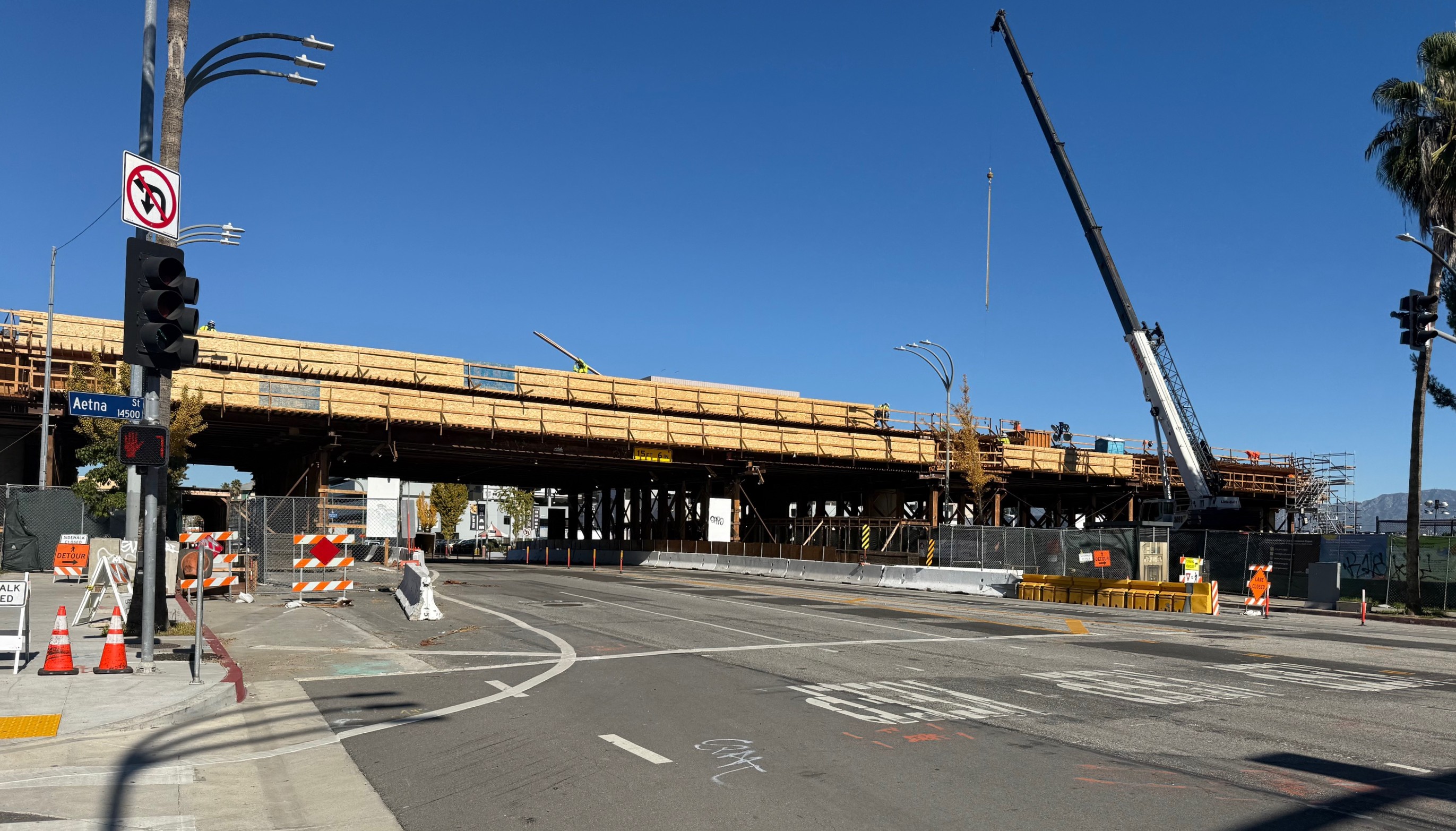Disclosure: The appeals in this story were filed by Joe Linton, outside of his capacity as an editor of Streetsblog Los Angeles.
In 2024 (full coverage), Los Angeles voters passed Measure HLA, the Healthy Streets Los Angeles initiative, which requires the city to implement its own mobility plan as it does major work on its roads and streets. While the measure was passed overwhelmingly, the city has slow-walked the official regulations needed to implement the measure and is taking a very conservative position on what triggers the Measure HLA mandate.
This week, for the first time ever, the Board of Public Works heard public appeals challenging the city’s compliance with Measure HLA.
Yesterday, Monday, November 24, the Board of Public Words (agenda) heard eight appeals claiming city projects triggered Measure HLA and should have added crosswalks, curb ramps, and bus or bike lanes where the city’s mobility plan called for them. The Board outright denied six of eight appeals.
Per the text of the Measure HLA ballot measure, the city does not have to implement its mobility plan if the city is only completing “restriping without other improvements.” This exemption is listed alongside pothole repairs, utility cuts, and emergency repairs. In the six appeals that the board voted to reject, the city did not “restripe” the existing configuration, but installed new lane striping to change traffic patterns, added parking, bike lanes, turn lanes, etc.
The appeals argued that these changes go beyond “restriping without other improvements.”
The city disagrees.
The city’s position appears to be more or less along the lines of: if a street reconfiguration project included installing pretty much any kind of lane striping, then it’s exempt from HLA because it’s considered “restriping without other improvements.”
City staff and the Board of Public Works acknowledged one error: earlier the city had declared that one resurfacing project had not triggered HLA. Upon appeal the city found that the nearly half-mile resurfacing actually did trigger HLA. For this resurfaced area, the city now plans to repair broken sidewalks that the city found to be a “severe impediment” to wheelchair access.
For another project, a technical error (one appeal was omitted from the meeting agenda) prevented the board from voting to deny all three appeals. There, Public Works rejected two appeals, and expects to consider the third at a future meeting.
One can’t help but wonder at the lengths that the city will go to to NOT do road improvements that are popular with voters, will make streets safer, and are relatively inexpensive. What is the disconnect between the city and its residents?
A second batch of appeals will be heard next Monday, 12/1, by the Board of Public Works. Update 11/26: After this post was published, the Board of Public Works announced that Monday 12/1 appeals have been rescheduled to Friday 12/5.
Details on yesterday’s appeals
The partial victory for the appellant was for city resurfacing on Hollywood between Gower St. and Virgil Avenue - part of the recent Hollywood Boulevard safety improvements.
Though it was all one project done in one corridor at one time, the city split this into two different sections so it could claim one portion of the project is “only restriping” and reject doing HLA improvements on that section.
In the western section of the Hollywood project, the city admitted it had “erroneously” placed the project on the HLA-exempt list, perhaps confused by its own efforts to do as little HLA implementation as possible. Rather than committing to specific remedies requested in this area, the city plans to repair the sidewalk at some point in the future.
The next three appeals urged HLA improvements be implemented on Roscoe Boulevard for roughly ten miles between Topanga Canyon Boulevard and Coldwater Canyon Avenue. As part of the Metro North San Fernando Valley Transit Corridor Project, the city put in new bus lanes, eliminated a mixed-use travel lane, changed the hours of on-street parking, added new bus shelters, and more. The city claimed that these improvements were just “restriping without other improvements.”
Staff had recommended the board reject three appeals, but the agenda only listed two.
On Victory Boulevard between Lankershim Boulevard and Clybourn Avenue in North Hollywood, the city removed a peak hour travel lane and added street parking. City staff and the Board agreed that this is just “restriping.”
On Mission Road between Cesar Chavez Avenue and 1st Street in Boyle Heights, the city reconfigured mixed-use travel lanes, added protected and unprotected bike lanes, but left curbs and crosswalks inaccessible to wheelchairs. More “just restriping.”
On San Vicente Boulevard the city recently removed a mixed travel lane to install a half-mile of eastbound protected bike lane, alongside partial street resurfacing (between La Brea Avenue and Orange Drive - approximately 525 feet). Here, the city claims HLA does not apply because the resurfacing was less than ⅛ of a mile, the distance required for resurfacing to trigger HLA. 525 feet is roughly 1/10 of a mile. So, the Board termed this project only “restriping without other improvements.”







